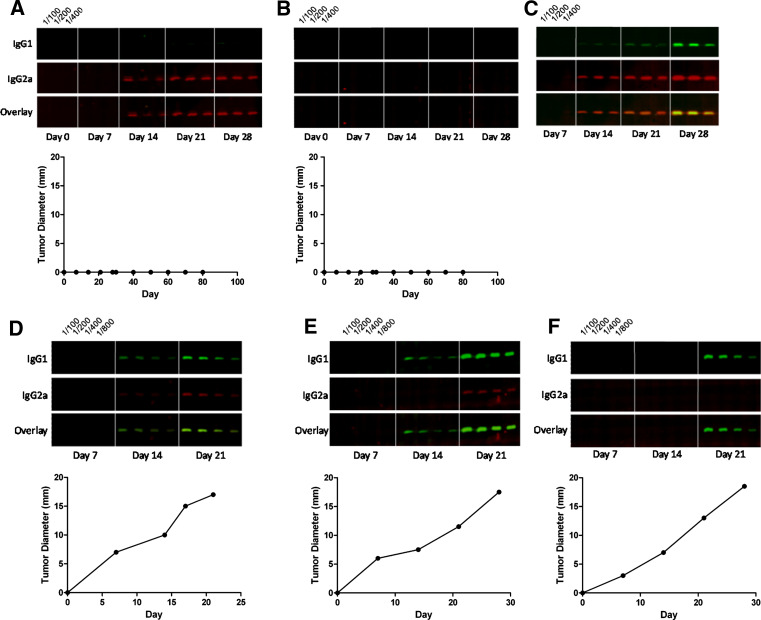Fig. 4.
Effective protection against P815 is associated with predominant IgG2a antibodies, while progressive tumor growth is associated with predominant IgG1 antibodies generated against P815 antigens a–c The mice were implanted with 105 P815 cells sc into their hind footpad on day 0. The mice were serially bled over a course of 28 days, and the relative abundance of P815-specific IgG1 and IgG2a antibodies were assessed by Western blot. (a, b) represent sera from mice, which subsequently resisted a normally lethal challenge of the P815 tumor 35 days post-vaccination. Note, day 0 on the graphs in (a) and (b) represent the day of vaccination and c represents the sera of a rare mouse suffering progressive tumor growth at the site of implantation in the footpad. d–f Antibodies in the sera of unprimed mice implanted with a lethal dose of 106 P815 cells id on their belly, as assessed by Western blot. The rate of tumor growth from each animal is shown below the Western blot

